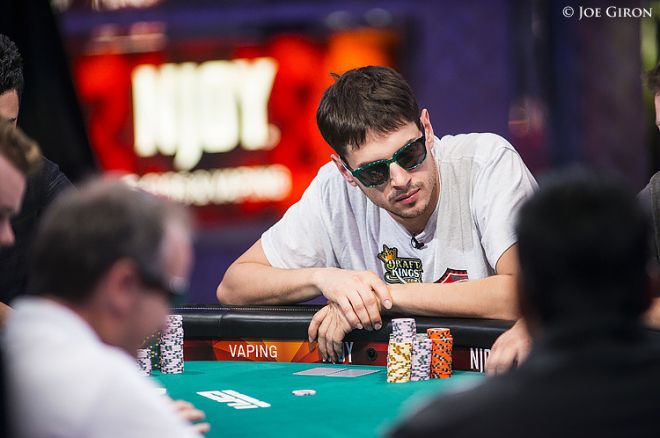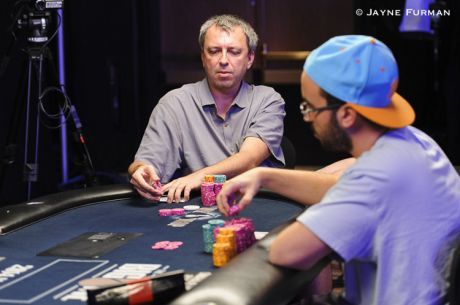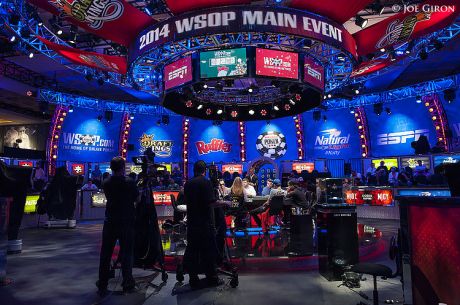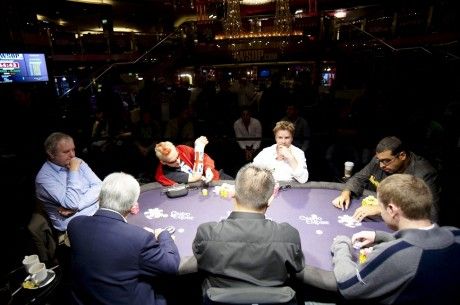2014 WSOP Main Event Hand Analysis: Lessons in Pot Control

It��s always tempting when you find yourself hitting the flop to fire bets into the middle with little regard to what your opponent might have. After all, more often than not the flop will not hit your hand, so when the flop is favorable you tend to want to get as many chips out of it as you can.
While the excitement can often be warranted, if you��re not careful you��ll end up finding yourself taking the long walk to the rail. Controlling the size of the pot �� ��pot control�� �� is a key skill for any successful poker player. During recent coverage of the 2014 World Series of Poker Main Event, the importance of this skill was demonstrated several times over.
With the November Nine just a day away, let��s evaluate a few hands leading up to the final table to see how they presented both good and not so good examples of pot control.
Hand #1: Felix Stephensen vs. Kyle Keranen
The blinds were 60,000/120,000 with a 15,000 ante. Kyle Keranen opened for a raise to 250,000 from middle position with K?Q? and it was folded to Felix Stephensen in the big blind who made the call with 7?7?.
The flop hit both players, coming Q?7?4?. Stephensen checked his set of sevens and Keranen bet 300,000 with his pair of queens. Stephensen called. The turn was the J? and both players checked. Stephensen then led out for 575,000 on the 10? river and Keranen made the losing call.
Even though Keranen lost the hand and over a million in chips while doing so, the hand provides a good example of how pot control can keep you from losing all your chips. Starting the hand with about 35 big blinds, it might have have been tempting for Keranen to continue to bet on the turn, but he correctly recognized Stephensen��s check-call on the flop was problematic and opted to check behind.
An argument could be made for Keranen folding the river, especially with the board texture, but all in all it was a minimal loss that allowed Keranen to remain alive in the tournament.
Hand #2: Eddy Sabat vs. Felix Stephensen
The blinds had increased to 80,000/160,000 with a 20,000 ante. Stephensen opened for 350,000 with A?10? and Eddy Sabat called in position with J?J?. Martin Jacobson made the call as well from the big blind with 7?5?.
The flop came 9?3?2? and Jacobson checked. Stephensen bet 425,000, Sabat called, and Jacobson folded. The turn brought the 7? and Stephensen checked. Sabat checked behind. The river was the A? giving Stephensen a pair of aces and he led out for 575,000, earning a reluctant call from Sabat, and Stephensen won the hand.
This hands shows how trying to exert pot control can sometimes backfire. When you just call bets rather than raise them, you give your opponent the opportunity potentially to catch up which is precisely what happened here. A raise on the flop or a bet on the turn would most likely have given Sabat the pot. Given that Sabat had position, those are plays he probably should have attempted.
Hand #3: Billy Pappas vs. Luis Velador
The blinds moved up again to 100,000/200,000 with a 30,000 ante. In this hand action was picked up on the flop with the board showing J?5?5? and 1,280,000 already in the pot. William Pappaconstantinou �� a.k.a. ��Billy Pappas�� �� checked holding 6?6?. Luis Velador had A?K? and bet 400,000, and Pappas called. The turn was the 3? giving Velador a flush draw to go with his overcards. Both players checked. The river was the 3?. Pappas led with a bet of 700,000, and Velador made a crying call with his ace-high.
While the river bet by Pappas wouldn��t fall into the realm of being a pot-control play, his play on the flop and turn allowed him to keep the pot small enough to take a reasonable stab at the pot on the river. The flop was a relatively good one for his pair of sixes, but since Pappas didn��t want to face a raise or reraise he correctly check-called.
Pappas was probably going to take the same line on the turn as it was another safe card, but Velador checked behind. That was enough to tell Pappas that he likely had the best hand, and so he made a value bet on the river that was paid off.
Hand #4: Mark Newhouse vs. Luis Velador
The blinds were still 100,000/200,000 with a 30,000 ante and Velador opened for a minimum raise to 400,000 with K?Q?. Only Mark Newhouse called the raise out of the small blind holding 8?6?. The flop came J?8?4? and Newhouse check-called a 425,000 bet from Velador. Both players would then check the 10? turn and 3? river, and Newhouse would take the pot down with his pair of eights.
This is a seemingly inconsequential hand, but like previous one it��s a good example of a player taking a cautious route when the flop hits his hand but he does not want to play a big pot. Newhouse calls the flop bet with middle pair and never leads with a bet thereafter, ultimately collecting the pot because of the lack of aggression and follow through on Velador��s part.
Newhouse would have had a difficult time check-calling another bet on the turn, but once Velador takes the cautious approach he��s correct to not bet the river as Newhouse likely would have called a bet there as the story would not have made sense.
Get all the latest PokerNews updates on your social media outlets. Follow us on Twitter and find us on both Facebook and Google+!








